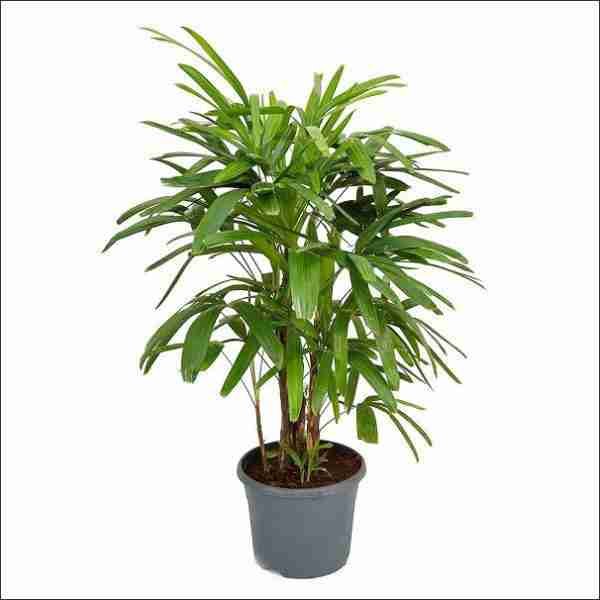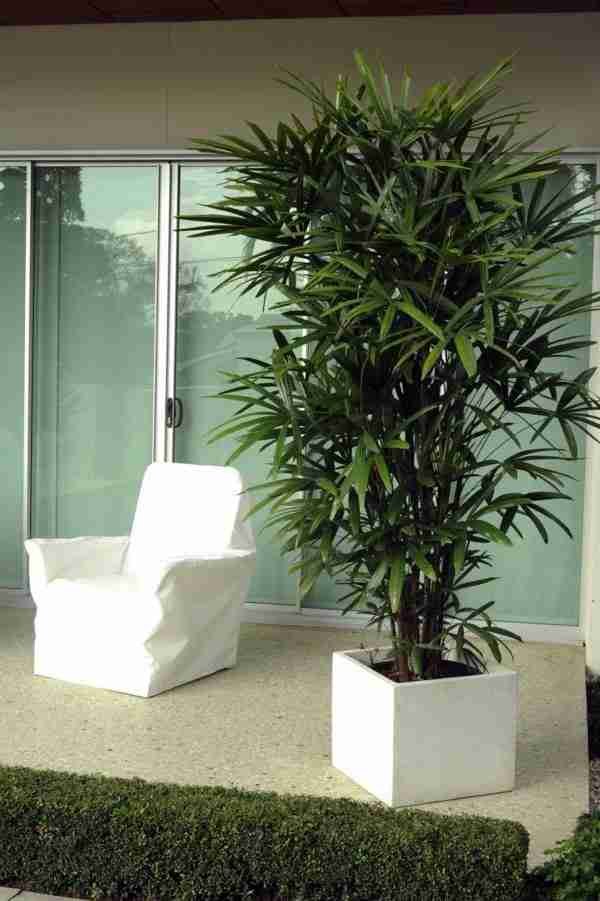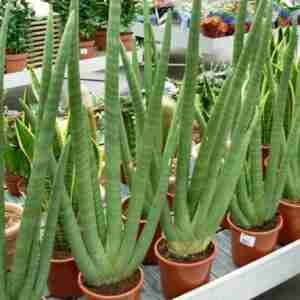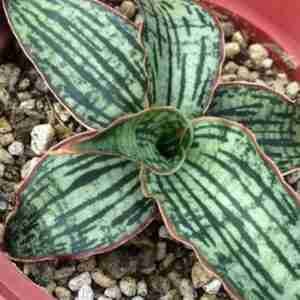Rhapis Palm aka Lady Palm
Rhapis excelsa, commonly known as the Rhapis Palm aka Lady Palm, is a popular indoor plant appreciated for its elegant appearance and ability to thrive in a variety of conditions. This palm species is known for its attractive fan-shaped leaves and robust growth, making it a favored choice for both home and office environments.
Key Characteristics of Rhapis Palm aka Lady Palm:
- Appearance: The Rhapis Palm aka Lady Palm features long, arching fronds that are divided into narrow, finger-like segments, resembling a fan. The leaves are deep green, glossy, and can grow up to 18 inches long. The plant typically has multiple stems, creating a bushy appearance.
- Size: Lady Palms can reach heights of 4-10 feet when grown indoors, making them suitable for creating height and visual interest in indoor spaces. The plant tends to be wider than it is tall, with a spread of about 3-5 feet.
- Light Requirements: Rhapis excelsa prefers bright, indirect light but can tolerate low light conditions. While it can survive in shaded areas, adequate light will promote healthier growth and denser foliage. Direct sunlight should be avoided, as it can scorch the leaves.
- Watering: The Lady Palm prefers to be kept consistently moist but not soggy. Water the plant when the top inch of soil feels dry. Overwatering can lead to root rot, so ensure the pot has good drainage and that excess water can escape.
- Soil: A well-draining potting mix is essential for Rhapis excelsa. A standard houseplant mix with added perlite or sand for improved drainage works well. Good aeration is crucial to prevent root issues.
- Temperature: Lady Palms thrive in temperatures between 65-80°F (18-27°C). They prefer higher humidity levels but can tolerate normal household humidity. Protect the plant from cold drafts and temperatures below 50°F (10°C).
- Care: This palm is relatively low-maintenance. It can benefit from occasional feeding with a balanced fertilizer during the growing season (spring and summer). Pruning is minimal; you can remove any yellow or dead fronds to maintain the plant’s appearance.
Benefits of Rhapis Palm aka Lady Palm:
- Aesthetic Appeal: The graceful, arching fronds of the Lady Palm make it an attractive addition to any indoor space. Its lush appearance adds a tropical feel and enhances the overall decor.
- Air Purification: Rhapis excelsa is known for its air-purifying qualities, helping to remove indoor pollutants such as formaldehyde and benzene from the air, contributing to a healthier indoor environment.
- Ease of Care: Lady Palms are resilient and can adapt to a range of light and moisture conditions, making them suitable for both novice and experienced plant enthusiasts.
Potential Issues with Rhapis Palm aka Lady Palm:
- Leaf Browning: Browning tips on the leaves may indicate underwatering, low humidity, or exposure to drafts. Ensuring consistent moisture and higher humidity can help prevent this issue.
- Yellowing Leaves: Yellow leaves can be a sign of overwatering or inadequate light. Adjust your care routine accordingly to address these issues.
- Pests: Lady Palms are generally resistant to pests but can occasionally attract spider mites, scale, or mealybugs. Regular inspection and prompt treatment with insecticidal soap or neem oil can help manage infestations.
Caution:
- Non-Toxic: Rhapis excelsa is considered non-toxic to pets and humans, making it a safe choice for homes with children or animals.
The Lady Palm is an elegant and versatile indoor plant that can enhance the beauty of your living space. Its attractive foliage, ease of care, and air-purifying benefits make it an excellent choice for anyone looking to add greenery to their home or office.








Reviews
There are no reviews yet.